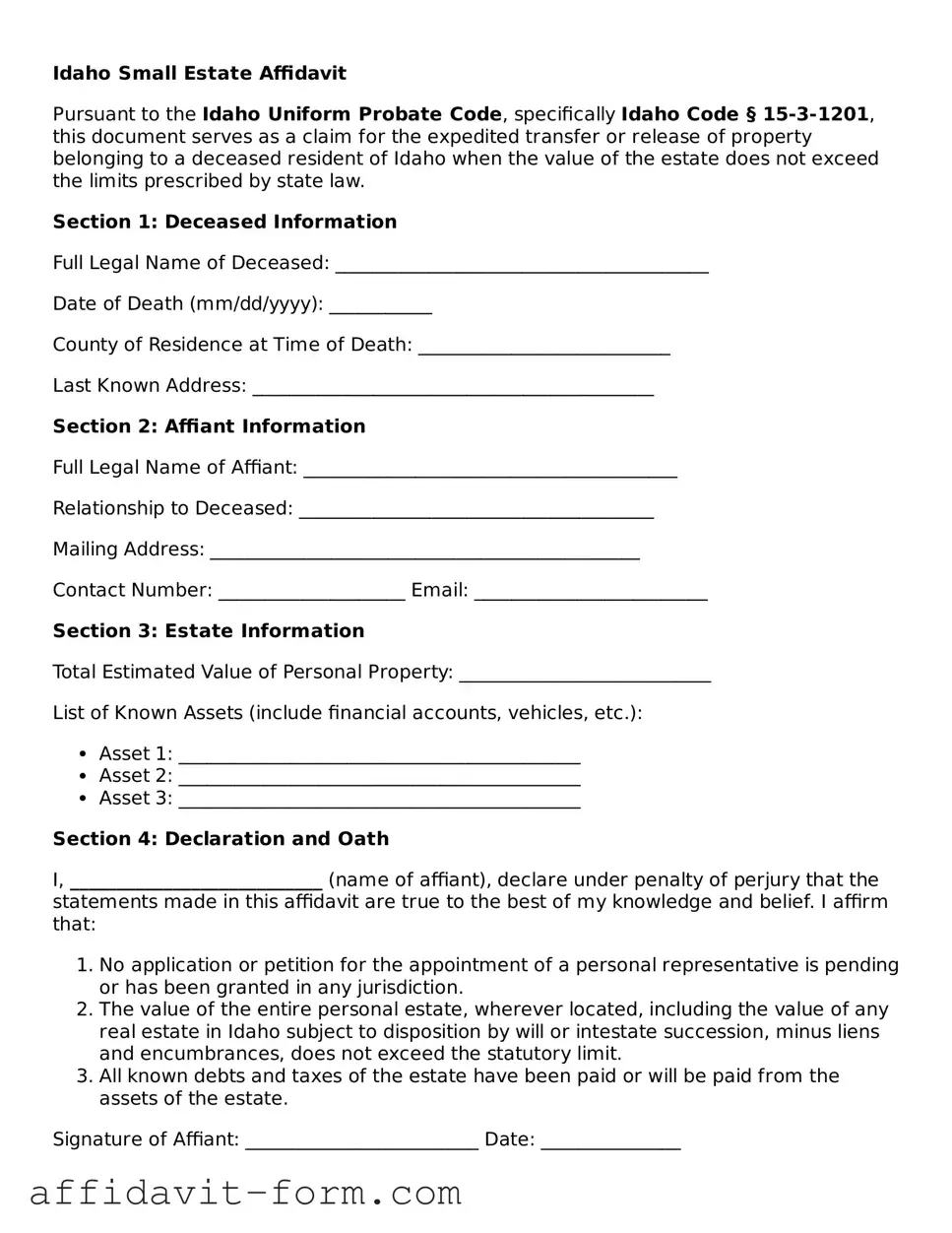Idaho Small Estate Affidavit
Pursuant to the Idaho Uniform Probate Code, specifically Idaho Code § 15-3-1201, this document serves as a claim for the expedited transfer or release of property belonging to a deceased resident of Idaho when the value of the estate does not exceed the limits prescribed by state law.
Section 1: Deceased Information
Full Legal Name of Deceased: ________________________________________
Date of Death (mm/dd/yyyy): ___________
County of Residence at Time of Death: ___________________________
Last Known Address: ___________________________________________
Section 2: Affiant Information
Full Legal Name of Affiant: ________________________________________
Relationship to Deceased: ______________________________________
Mailing Address: ______________________________________________
Contact Number: ____________________ Email: _________________________
Section 3: Estate Information
Total Estimated Value of Personal Property: ___________________________
List of Known Assets (include financial accounts, vehicles, etc.):
- Asset 1: ___________________________________________
- Asset 2: ___________________________________________
- Asset 3: ___________________________________________
Section 4: Declaration and Oath
I, ___________________________ (name of affiant), declare under penalty of perjury that the statements made in this affidavit are true to the best of my knowledge and belief. I affirm that:
- No application or petition for the appointment of a personal representative is pending or has been granted in any jurisdiction.
- The value of the entire personal estate, wherever located, including the value of any real estate in Idaho subject to disposition by will or intestate succession, minus liens and encumbrances, does not exceed the statutory limit.
- All known debts and taxes of the estate have been paid or will be paid from the assets of the estate.
Signature of Affiant: _________________________ Date: _______________
State of Idaho
County of _______________
Subscribed and sworn to (or affirmed) before me on this ___ day of ___________, 20___, by ______________________________________________ (name of affiant).
____________________________________
Notary Public
My commission expires: _______________
This template provides a straightforward approach for individuals in Idaho who are handling small estates to ensure compliance with state law. It includes sections for detailing information about the deceased, the affiant, and the estate, as well as a declaration that must be notarized. This document is helpful for simplifying the legal process during a challenging time.
